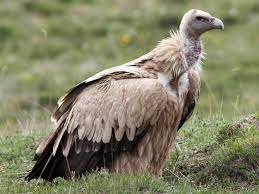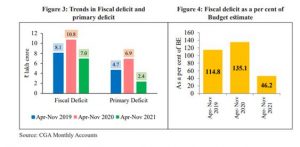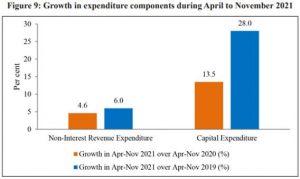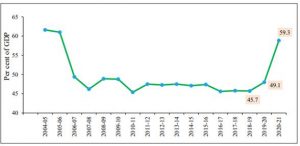DAILY CURRENT AFFAIRS (MARCH 22, 2022)
THE INTERNATIONAL RELATIONS
1.‘RUSSIA USED PHOSPHORUS SHELLS IN DONBAS ATTACKS’
THE CONTEXT: Ukrainian officials accused Russia of using phosphorus chemical bombs in the eastern Donbas region, while a separate air strike on a monastery sheltering civilians wounded 30.
THE EXPLANATION:
International law prohibits the use of white phosphorus shells in heavily populated civilian areas but allows them in open spaces to be used as cover for troops.
What is White Phosphorus?
- White phosphorous is a colour less, white or yellow, waxy solid.
- It does not occur naturally.
- It is manufactured using phosphate rocks. It smells like garlic.
- It is a highly combustible substance that reacts with oxygen in the air.
- It can catch fire at temperatures as low as 10 to 15 degrees above room temperature.
Applications:
- Militaries across the globe use white phosphorous (WP) in mortar shells, grenades and artillery shells.
- When burnt, WP produces a large amount of smoke that can be used to provide a screen to friendly troops’ movement.
- The smoke can also be used to mark the targets so that aircraft can drop bombs at the location.
- It can also be used by troops to give the signal for attack or evacuation.
- Other applications may include as a component in fertilisers, food additives and cleaning compounds.
Chemical Weapons Convention (CWC):
- CWC is a multilateral treaty that bans chemical weapons and requires their destruction within a specified period of time.
- CWC negotiations started in 1980 in the UN Conference on Disarmament.
- The convention entered into force on April 29, 1997.
- CWC is implemented by: Organization for the Prohibition of Chemical Weapons (OPCW),
- The OPCW receives states-parties’ declarations detailing chemical weapons-related activities and relevant industrial activities.
- CWC is open to all nations and currently has 193 states-parties.
- India is a signatory and party to the CWC.
- Three states have neither signed nor ratified the convention: Egypt, North Korea and South Sudan.
Prohibitions:
The CWC prohibits:
- Developing, producing, stockpiling, or retaining chemical weapons.
- The direct or indirect transfer of chemical weapons.
- Chemical weapons use or military preparation for use.
- Assisting, encouraging, or inducing other states to engage in CWC-prohibited activity.
- The use of riot control agents as a method of warfare.
2. JAPAN TO INVEST $42 BILLION IN INDIA OVER FIVE YEARS
THE CONTEXT: India and Japan set an investment target of “five trillion yen” ($42 billion) in the next five years, the leaders announced after a meeting in New Delhi for the 14th annual summit, where several agreements were signed.
THE EXPLANATION:
- The two sides discussed various regional issues where Indian Prime Minister briefed Japan PM Fumio Kishida on the situation at the Line of Actual Control (LAC) with China, and the PLA’s attempts at “multiple transgression” on the LAC.
- The two sides also exchanged six agreements on cybersecurity, economic partnerships, waste–water management, urban development, a clean energy partnership and an agreement on promoting bamboo–based products from the northeast region.
List of Agreements/MoUs signed during the 14th India-Japan Annual Summit
- Memorandum of Cooperation (MoC) in the field of Cybersecurity: For information sharing, capacity building programs and cooperation in the area of cybersecurity.
- 7 JICA Loans (INR 20400 crores) for projects in connectivity, water supply and sewerage, horticulture, healthcare, and biodiversity conservation in various States.
- Dedicated Freight Corridor Project (Phase 2) (III)
- North East Road Network Connectivity Improvement Project (NH208 (Khowai – Sabroom)) Phase 6
- Bengaluru Water Supply and Sewerage Project (Phase 3) (II)
- Uttarakhand Integrated Horticulture Development Project
- Strengthening Health Systems and Excellence of Medical Education in Assam
- Tamil Nadu Biodiversity Conservation and Greening Project Phase –II
- Chennai Metro (Phase 2) (II)
- Amendment of Article 7 (Exchange of Information) of Implementing Agreement (IA) signed between India and Japan as per Article 13 of India-Japan Comprehensive Economic Partnership Agreement (CEPA). Amend Annex 2 (Product Specific rules) of CEPA to allow the fish surimi product of India with the non-originating additive to be considered as an originating good of India.
- Memorandum of Cooperation (MoC) on Decentralized Domestic Wastewater Management: To introduce Johkasoutechnology in India by Japanese companies for decentralized waste water treatment. It is used in areas where sewage infrastructure has not yet been developed.
- India-Japan Industrial Competitiveness Partnership Roadmap: To implement the Memorandum of Cooperation (MoC) on India-Japan Industrial Competitiveness Partnershipthat was signed in November 2021. It seeks to seeks to address issues that Japanese companies currently face in India through a fast-track mechanism. Working Groups on logistics and textiles have been established and in other sectors as needed. It includes cooperation in Micro, Small and Medium Enterprises (MSME) sector and supply chain matters.
6. Memorandum of Cooperation on Sustainable Urban Development: Builds on the 2007 Memorandum of Understanding (MoU) on Urban Development to include smart cities development, affordable housing, urban flood management, wastewater management, Intelligent Transport Management System etc.
For other Announcement during Summit
- Clean Energy Partnership (CEP): For cooperation in areas such as electric vehicles, storage systems including batteries, electric vehicle charging infrastructure, development of solar energy; hydrogen; ammonia; etc. The objective is to encourage manufacturing in India, creation of resilient and trustworthy supply chains in these areas as well as fostering collaboration in R&D. It will be implemented through the existing mechanism of Energy Dialogue.
- 5 trillion yen investment target (TBC): This follows from the Investment Promotion Partnership of 2014 when both sides had agreed for JPY 3.5 trillion investment during 2014-19. That target has been met, taking into account both ODA and Investments from Japan. The new ambitious target would provide a scope for greater involvement of Japanese companies in our economy.
- Sustainable Development Initiative for the Northeastern Region of India: Includes both ongoing projects and possible future cooperation in various States in the NER in areas such as connectivity, healthcare, new and renewable energy, as well as ‘Initiative for Strengthening Bamboo Value Chain in the North East’.
THE ENVIRONMENT AND ECOLOGY
3. THE VULTURE HOLOCAUST IN ASSAM
THE CONTEXT: According to forest officials, as many as 100 endangered vultures and an eagle have died in Assam’s Chaygaon region. The cause of death is being conjectured to be insecticide poisoning.
THE EXPLANATION:
- As per reports, the area where they were found is located close to a village where at least 10 endangered vultures died after feeding on a pesticide-laced cattle carcass in February 2020. The vultures belonged to the Himalayan Griffon species while the eagle was a Stepee Eagle. Both birds are listed in Schedule 1 of the Wildlife Protection Act, 1972.
- There have been several instances of vultures dying after consuming carcass of poisoned animals in Assam in the past few years. In January and February 2021 , 56 vultures died in Tinsukia district in two separate incidents after consuming poisoned carcasses of cows.
- In April 2020, 19 vultures had died on a single day in Sivasagar district after consuming meat of a dead cow. In March 2019, 39 vultures had died in the same district after consuming poisoned meat.
VALUE ADDITION:
About Vultures:
- It is one of the 22 species of large carrion-eating birds that live predominantly in the tropics and subtropics.
- They act an important function as nature’s garbage collectors and help to keep the environment clean of waste.
- Vultures also play a valuable role in keeping wildlife diseases in check.

Why is the vulture population so significant?
- Vultures clear the carcasses of dead animals (nature’s cleanup crew) playing a crucial role in maintaining the health of the ecosystem
- Vultures have a highly acidic stomach that helps them kill disease-causing bacteria
- Reduces the health hazards associated with feral dogs that consume carcasses
What efforts have been taken for their conservation?
National Efforts
- India banned diclofenac for veterinary use in 2006.
- Action Plan for Vulture Conservation 2020-25 was released by MoEFCC.
- Vulture Conservation Breeding Programme (VCBP) was established by Central Zoo Authority and Bombay Natural History Society (BNHS) for captive breeding.
- Vulture Safe Zones are declared when no toxic drugs are found in undercover pharmacies and cattle carcass surveys for two consecutive years.
- Vulture restaurant has been established at Phansad wildlife sanctuarynear Murud in Maharashtra.
International Efforts
- Saving Asia’s Vultures from Extinction (SAVE) – A consortium of like-minded, regional and international organizations for conservation of south Asia’s vultures.
THE GOVERNMENT SCHEMES/NEWS IN NEWS
4. NIPUN BHARAT SCHEME
THE CONTEXT: The Department of School Education and Literacy, Ministry of Education, Government of India has launched the National Mission on Foundational Literacy and Numeracy called National Initiative for Proficiency in Reading with Understanding and Numeracy (NIPUN Bharat) on 5thJuly 2021 under the aegis of Centrally Sponsored Scheme of SamagraShiksha.
ABOUT THE SCHEME:
- The National Mission which has been launched under the aegis of the centrally sponsored scheme of Samagra Shiksha, will focus on providing access and retaining children in foundational years of schooling; teacher capacity building; development of high quality and diversified Student and Teacher Resources/Learning Materials; and tracking the progress of each child in achieving learning outcomes.
- The Department of School Educationand Literacy, Ministry of Education (MoE) will be the implementing agency at the national level and will be headed by a Mission Director.
Students covered
- The mission will focus on children of age group of 3 to 9 years including pre-school to Grade 3. The children who are in Class 4 and 5 and have not attained the foundational skills will be provided individual teacher guidance and support, peer support and age appropriate and supplementary graded learning materials to acquire the necessary competencies.
- The goals and objectives of the mission are required to be achieved by all Govt., Govt. Aided and Private Schools so that universal acquisition of FLN skills can be achieved by 2026-27.
| Value Addition:
Samagra Shiksha Samagra Shiksha is an overarching programme for the school education sector extending from pre-school to class 12. The scheme has been prepared with the broader goal of improving school effectiveness measured in terms of equal opportunities for schooling and equitable learning outcomes. It subsumes the three Schemes of Sarva Shiksha Abhiyan (SSA), Rashtriya Madhyamik Shiksha Abhiyan (RMSA) and Teacher Education (TE) and was launched in 2018. |
THE PRELIMS PERSPECTIVE
5. INTERNATIONAL DAY OF FORESTS- MARCH 21
THE CONTEXT: International Day of Forests is observed every year on March 21 The day aims to raise awareness regarding the importance of all types of forests.
THE EXPLANATION:
- According to the UN, around 1.6 billion people depend directly on forests for food, shelter, energy, medicines and income. Forests are home to about 80 per cent of the world’s terrestrial biodiversity.
- World Forest Day theme 2022: The International Day of Forests 2022 theme is ‘Forests and Sustainable production and consumption.’
- The International Day of Forests was observed for the first time on March 21, 2013.
Why this day?
In 2012, the Food and Agriculture Organisation (FAO) and United Nations (UN) established the day to combat climate change. Every year on this day, leading government networks and private organisations come together to enlighten people about the importance of forests and the role they play in our lives.
| Value Addition:
The ‘India State of Forest Report (ISFR)’ for the year 2021 was released recently by the Forest Survey of India (FSI). The total forest cover & tree cover in India is about 24.62% of the geographical area, much less than the 33% target set to be achieved by 2022. Between 2011 & 2021, the total forest cover increased by about 21,762 sq. km, roughly the size of the state of Mizoram. |
THE DATA SHEET
THE PRELIMS PRACTICE QUESTIONS
QUESTIONS OF THE DAY 22ND MARCH 2022
Q. Which of the following best explains stagflation?
a) A situation in an economy when inflation and unemployment both are at higher levels.
b) A situation in an economy when inflation and employment both are at higher levels.
c) A situation in an economy when there is high inflation and low unemployment.
d) A situation in an economy when there is low inflation and high unemployment.
ANSWER FOR 21ST MARCH 2022
Answer: C
Explanation:
- Asiatic lion’s habitat included tropical dry forests, grasslands, thickets and deserts. Today’s,its population is limited in Gir National Park in Gujarat.





